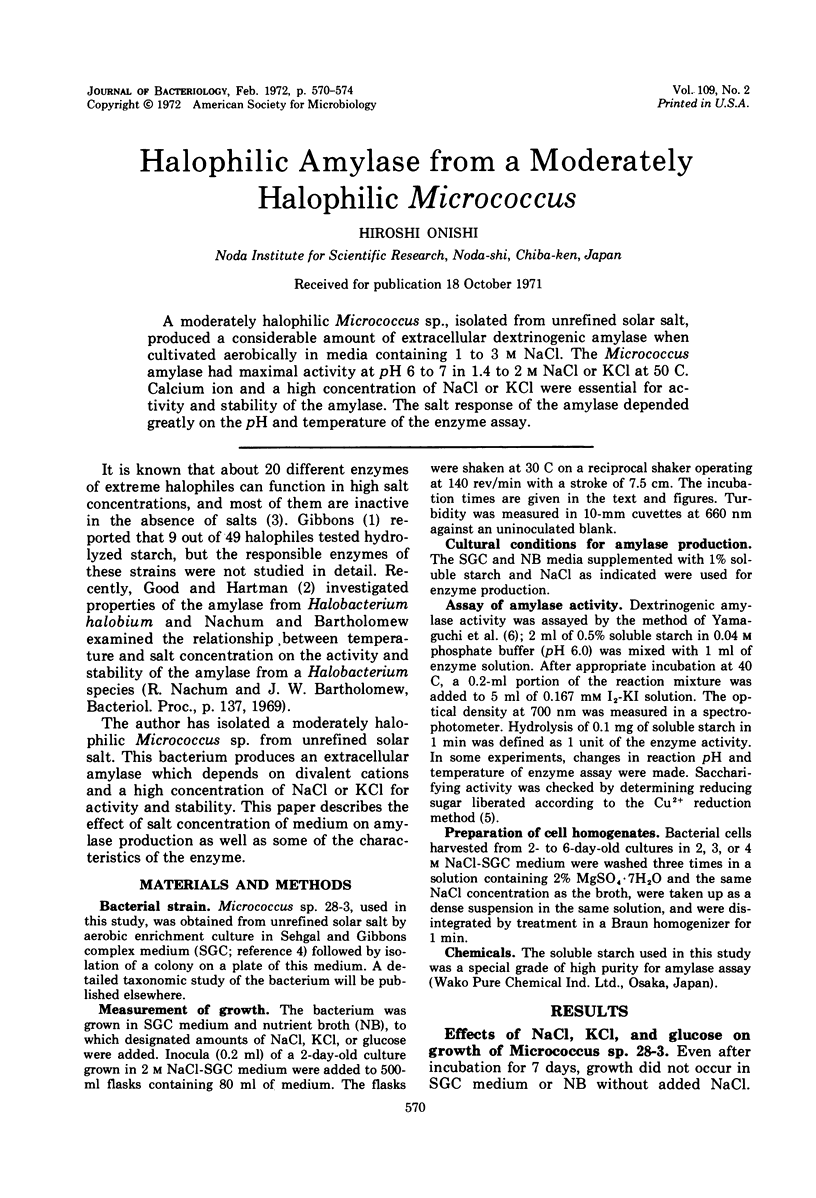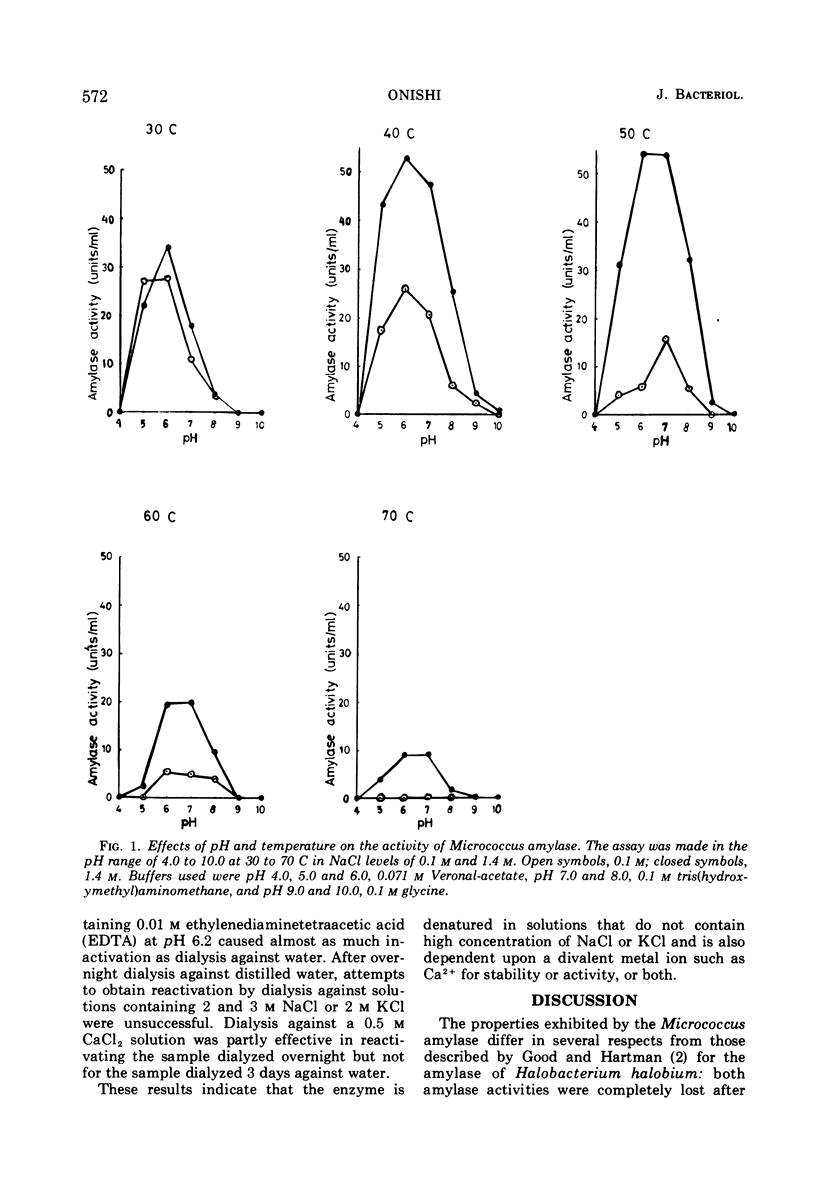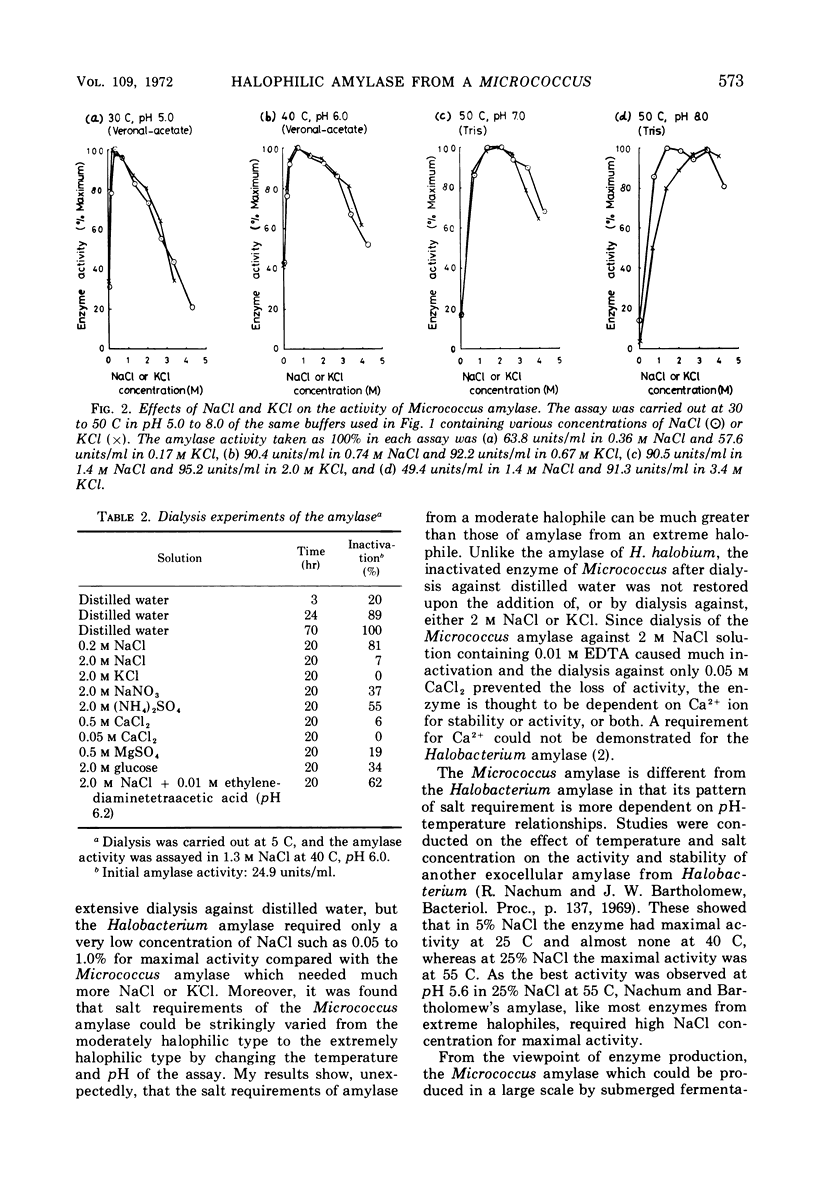Abstract
A moderately halophilic Micrococcus sp., isolated from unrefined solar salt, produced a considerable amount of extracellular dextrinogenic amylase when cultivated aerobically in media containing 1 to 3 m NaCl. The Micrococcus amylase had maximal activity at pH 6 to 7 in 1.4 to 2 m NaCl or KCl at 50 C. Calcium ion and a high concentration of NaCl or KCl were essential for activity and stability of the amylase. The salt response of the amylase depended greatly on the pH and temperature of the enzyme assay.
Full text
PDF




Selected References
These references are in PubMed. This may not be the complete list of references from this article.
- GIBBONS N. E. The effect of salt concentrations on the biochemical reactions of some halophilic bacteria. Can J Microbiol. 1957 Mar;3(2):249–255. doi: 10.1139/m57-029. [DOI] [PubMed] [Google Scholar]
- Good W. A., Hartman P. A. Properties of the amylase from Halobacterium halobium. J Bacteriol. 1970 Oct;104(1):601–603. doi: 10.1128/jb.104.1.601-603.1970. [DOI] [PMC free article] [PubMed] [Google Scholar]
- Kushner D. J. Halophilic bacteria. Adv Appl Microbiol. 1968;10:73–99. doi: 10.1016/s0065-2164(08)70189-8. [DOI] [PubMed] [Google Scholar]
- SEHGAL S. N., GIBBONS N. E. Effect of some metal ions on the growth of Halobacterium cutirubrum. Can J Microbiol. 1960 Apr;6:165–169. doi: 10.1139/m60-018. [DOI] [PubMed] [Google Scholar]


